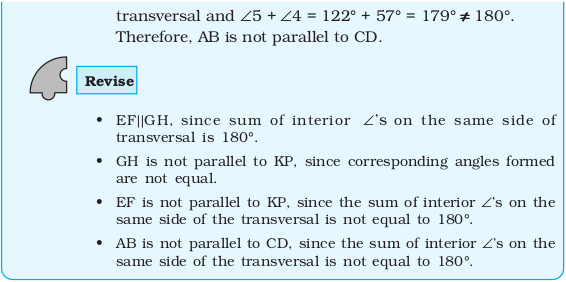Candidates can download NCERT Exemplar Class 7 Maths Unit 5 from this page. The exemplar has been provided by the National Council of Educational Research & Training (NCERT) and the candidates can check it from below for free of cost. It contains objective, very short answer type, short answer type, and long answer type questions. Along with it, the answer for each question has also been provided. From the NCERT Exemplar Class 7 Maths Unit 5, candidates can understand the level and type of questions that are asked in the exam.
NCERT Exemplar Class 7 Maths Unit 5 Lines and Angles
NCERT Class 7 Maths Unit 5 is for Lines and Angles. The type of questions that will be asked from NCERT Class 7 Maths Unit 5 are displayed in the below provided NCERT Exemplar Class 7 Maths Unit 5. With the help of it, candidates can prepare well for the examination.
Also Check: NCERT Solutions Class 7 Maths
Main Concepts and Results
An angle is formed when two lines or rays or line segments meet or intersect.
When the sum of the measures of two angles is 90°, the angles are called complementary angles. Each of them is called complement of the other.
When the sum of the measures of two angles is 180°, the angles are called supplementary angles. Each of them is called supplement of the other.
• Two angles are called adjacent angles, if they have a common vertex and a common arm but no common interior points.
A linear pair is a pair of adjacent angles whose non-common sides are opposite rays.
When two lines intersect, the vertically opposite angles so formed are equal.
When two lines are intersected by a transversal, eight angles are formed. These angles can be classified as 4 interior angles, 4 exterior angles, 4 pairs of corresponding angles, 2 pairs of alternate interior
angles, 2 pairs of alternate exterior angles and two pairs of interior angles on the same side of the transversal.
If two parallel lines are intersected by a transversal,
(i) each pair of corresponding angles is equal.
(ii) each pair of alternate interior angles is equal.
(iii) each pair of interior angles on the same side of the transversal is
supplementary.
Converses of the above results are also true.
Solved Examples


















Multiple Choice Questions

Fill in the Blanks Type Questions

True False Type Questions

Other Important Type Questions

Application



Answers




To get study material, exam alerts and news, join our Whatsapp Channel.